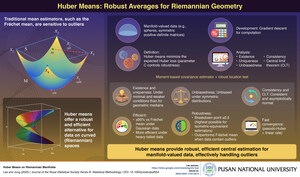
Pusan National University Unveils 3D-Printed Brain Vessels to Transform Atherosclerosis Research
Advanced 3D model recreates pathological flow conditions to study underlying cerebrovascular disease mechanisms
BUSAN, South Korea, Aug. 19, 2025 /PRNewswire/ -- Cerebrovascular diseases, including atherosclerosis and stroke, remain a major global health concern. A common feature of these diseases is vascular stenosis—the narrowing of blood vessels—which disrupts normal blood flow and contributes to chronic inflammation in vessel walls. Endothelial cells lining the vasculature sense shear stress from blood flow and respond to disturbed hemodynamics by expressing pro-inflammatory molecules. However, studying this phenomenon in vivo is challenging due to the complexity and variability of living systems.
Traditional in vitro models often fall short of replicating the structural, mechanical, and biological complexity of the human cerebrovascular environment. This highlights the need for more physiologically relevant models to study how abnormal flow patterns drive endothelial dysfunction and inflammation.
To bridge this gap, a collaborative team led by Professor Byoung Soo Kim and Researcher Min-Ju Choi from Pusan National University, along with Professor Dong-Woo Cho and Dr. Wonbin Park from Pohang University of Science and Technology (POSTECH), developed a 3D-bioprinted in vitro model of stenotic brain blood vessels. Their study was published online in the Advanced Functional Materials journal on June 24, 2025.
"We used a novel embedded coaxial bioprinting technique to rapidly fabricate perfusable vascular conduits with controlled luminal narrowing," explains Prof. Kim. "Our bioink—a hybrid of porcine aorta-derived decellularized extracellular matrix, collagen, and alginate—offered both mechanical strength and essential biological cues to support endothelial cell attachment and function."
The bioprinted vessels encapsulated human endothelial cells, including umbilical vein and brain microvascular cells, and were exposed to flow conditions simulating both normal and stenotic blood vessels. The model successfully replicated in vivo blood flow conditions and stenotic geometries associated with cerebrovascular diseases. Computational fluid dynamics simulations and tracer bead experiments confirmed that stenotic regions produced disturbed flow patterns characteristic of atherosclerotic vessels. The endothelialized vessels showed continuous coverage and expressed all junction proteins, including CD31, VE-cadherin, and ZO-1. The vessels also maintained barrier integrity through selective permeability. Notably, disturbed flow conditions triggered significant upregulation of inflammatory markers while the vessels still retained characteristics of a mature endothelial barrier.
"This 3D bioprinting technology marks a significant advancement in cerebrovascular disease modeling by enabling anatomically accurate and physiologically relevant vessels," shares Prof. Kim. Using a reinforced ECM-based bioink and coaxial bioprinting, the model replicates stenotic vessel geometry and flow dynamics, providing a realistic platform to study flow-induced endothelial inflammation. Its compatibility with multiple endothelial cell types broadens its utility in disease modeling and personalized medicine. By bridging the gap between simplistic in vitro systems and complex in vivo models, this platform reduces reliance on animal testing and enhances drug screening and toxicity assessments.
Future refinements—such as incorporating brain-specific ECM, co-culturing vascular support cells, and using patient-derived cells—could further enhance physiological accuracy and enable patient-specific modeling. Integration with organ-on-a-chip platforms and AI-driven analytics may also allow real-time monitoring of endothelial responses to therapies.
In conclusion, this study introduces a robust platform for cerebrovascular tissue engineering. As bioprinting technologies evolve, they hold the potential to transform how we study and treat diseases such as stroke and atherosclerosis, accelerating therapeutic discovery and personalized interventions.
Reference
Title of original paper: "Embedded 3D-Coaxial Bioprinting of Stenotic Brain Vessels with a Mechanically Enhanced Extracellular Matrix Bioink for Investigating Hemodynamic Force-Induced Endothelial Responses"
Journal: Advanced Functional Materials
DOI: https://doi.org/10.1002/adfm.202504276
About Pusan National University
Website: https://www.pusan.ac.kr/eng/Main.do
Contact:
Goon-Soo Kim
82 51 510 7928
[email protected]
SOURCE Pusan National University








Share this article